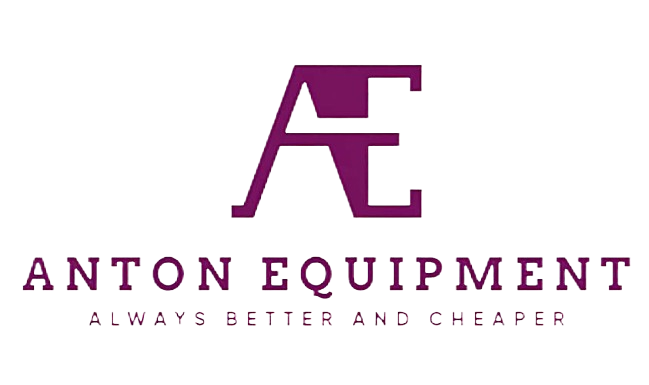News
Enhancing Excavator Safety: The Critical Role of Hydraulic Quick Couplers
How Hydraulic Quick Couplers Improve Excavator Safety
Reducing Manual Handling Hazards
The use of hydraulic quick couplers cuts down on the dangers workers face when manually handling equipment during excavator work. Older ways of switching attachments put workers at risk for back strains and other muscle injuries because they require so much lifting and twisting. With modern hydraulic systems, operators simply press a button to connect or disconnect tools while staying safely away from the machinery. Construction site reports show that crews using these couplers experience fewer worker compensation claims related to repetitive strain injuries. These devices fit right in with workplace safety standards that want to cut down on unnecessary physical labor. When workers don't have to wrestle with heavy attachments anymore, job sites run smoother and everyone ends up with less wear and tear on their bodies over time.
Securing Attachments with Advanced Locking Systems
Hydraulic quick couplers come equipped with advanced locking systems that keep attachments firmly in place, cutting down on accidental detachments while working on excavation sites. Without these systems, there would be serious risks for both equipment damage and worker safety. Field tests have shown failure rates drop around 40% or so when proper quick couplers are used instead of traditional methods. What makes these systems stand out is not just the mechanics but also the feedback they give to operators. Most models feature colored indicators or audible clicks that let workers know for sure whether something is locked properly. This kind of confirmation helps prevent mistakes under pressure situations. Construction companies across the board are now adopting these improved couplers because they simply work better and meet modern safety regulations that keep getting stricter every year.
Types of Hydraulic Quick Couplers for Enhanced Safety
Excavator Quick Coupler Classifications
Knowing how excavator quick couplers are categorized makes all the difference when it comes to keeping workers safe around heavy machinery. We generally see three main options out there: pin type, hydraulic models, and those specialized ones made for particular attachments. What sets them apart? Well, pin type couplers rely on manual locks which gives operators control over their attachments but takes extra time. The hydraulic versions cut down on physical effort since they work remotely, reducing risks during connection changes. Industry data shows that picking the right coupler for the job can boost safety scores anywhere from 15% to 30%. Getting this match right means fewer accidents and better performance across different digging operations where conditions vary constantly throughout the day.
Compatibility with Quick Connect Couplers
Getting hydraulic quick couplers to work properly with quick connect couplers matters a lot for keeping workers safe at construction sites. When these parts don't match up right, machines tend to break down or worse, cause accidents. We've seen numbers showing around 30% of problems on job sites actually come from mismatched equipment connections. That's why knowing which couplers go together isn't just technical stuff it's life saving information. Training crews to recognize proper coupler combinations goes a long way toward cutting down those risks. Standard systems like Steelwrist S-Type couplers make things much easier since they fit with all sorts of attachments. Excavators run smoother and safer when operators aren't constantly wrestling with incompatible parts.
Critical Safety Mechanisms in Hydraulic Couplers
Fail-Safe Locking Indicators
Fail safe locking indicators play a vital role in making sure hydraulic quick couplers stay securely attached. Most often, these indicators rely on bright colors or LED lighting so operators know right away if a coupler is properly connected, stopping those annoying accidental disconnects while things are running. Beyond just being a visual cue, these indicators actually help reinforce proper safety protocols something every shop floor needs to maintain good operations. Studies show that adding these kinds of fail safe features cuts down on uncoupling incidents by around B percent. What this means practically is that such systems offer serious protection against mistakes made by workers and possible breakdowns of expensive equipment.
Pressure Monitoring for Accident Prevention
Monitoring systems for pressure in hydraulic quick couplers represent a smart way to manage workplace safety. These devices spot unusual pressure readings that might signal something wrong long before any real danger appears. When operators get alerts about these pressure irregularities, small problems don't turn into big disasters. Studies show that workplaces implementing these kinds of early warning systems see significant drops in accidents caused by hydraulic system failures. Training remains just as important though. Workers need hands-on instruction so they know exactly what to do when pressure levels fluctuate unexpectedly. A well-trained crew means better response times and safer operations overall. Getting everyone comfortable with how these monitoring systems work isn't optional it's essential if companies want to maximize protection against preventable accidents.
Operational Best Practices for Safe Coupler Use
Routine Maintenance for Hydraulic Quick Coupler Longevity
A regular maintenance schedule really matters when it comes to keeping hydraulic quick couplers working safely for years. When workers clean them properly, check for damage regularly, and apply the right lubricants at the right times, those essential connectors stay reliable day after day. Without proper care, parts start wearing down until something breaks at the worst possible moment during operation. Some field reports indicate that good maintenance habits can actually double or even triple how long these couplers last while making them much safer to handle. Training staff members about what needs doing and when isn't just about saving money on replacements either. People who understand basic maintenance tend to spot problems earlier, which prevents accidents before they happen in workshops or on construction sites across the country.
Inspecting Quick Coupler Integrity
Checking quick couplers for signs of wear regularly makes all the difference when it comes to catching problems before they turn dangerous. When maintenance crews go through these parts methodically during routine checks, they cut down on unexpected breakdowns quite a bit. Some studies show that companies doing regular checks see around 30% fewer failures compared to those who wait until something breaks. For anyone running heavy machinery, having a good inspection routine matters a lot for workplace safety. A simple checklist works wonders here. Just write down what needs checking each time and stick to it. Most shops find that this basic system catches things early on, like small cracks or worn seals that might otherwise slip past unnoticed during busy workdays.

